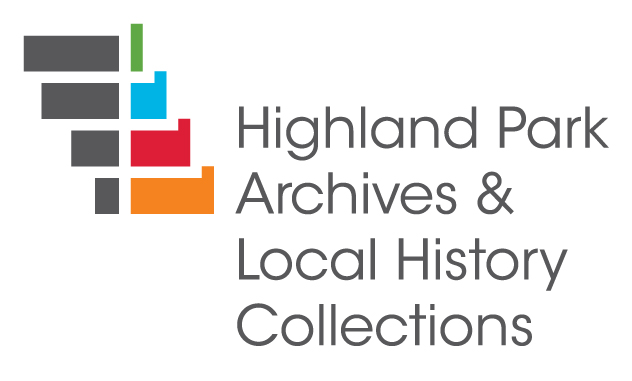First National Bank of Highland Park.
- Corporate body
- 1899-
In 1937, the Highland Park State Bank converted to the First National Bank of Highland Park. Founded as Highland Park Bank in 1899 and incorporated as Highland Park State Bank in 1904, Highland Park State Bank merged with Highland Park Trust and Savings Bank in 1923. Highland Park Trust and Savings Bank was created in 1916 after the the death of David M Erskine, who founded D. M. Erskine Bank in 1899.
The Banker’s Magazine, Vol. 59, notes two banks were opened in Highland Park in late 1899, the D. M. [David McMichan] Erskine Bank and the Highland Park Bank (incorporated as Highland Park State Bank in 1904), the first official banks in the young community. The eponymous Erskine Bank evolved from multiple ventures of David Erksine.
Born on the Isle of Antiqua, West Indies in 1851, Erskine founded a Highland Park real estate business circa 1874. He rapidly expanded his business ventures, including a newspaper and private loans and investment services. He also became active in local government and civic activities. Erskine advocated for the city’s water works structure, culminating in Highland Park’s Water Ordinance of 1916. He served as mayor of Highland Park 1891-1893.
Erskine’s name remains strongly associated with the historic building with the post clock at the northeast corner of Central and Saint Johns Avenues in Highland Park. Erskine built the Erskine Bank Building with two vaults in 1907 after purchasing and demolishing the original structure, called the McDonald Building, which had been built by the Highland Park Building Company. Erksine had moved his banking offices there in 1900.
The D. M. Erskine Bank shut its doors after Erskine’s death October 26, 1916 and never reopened. His widow, Maud Erskine, assured depositors relief and access to their funds from the enterprise’s quarter million dollars in assets. She soon sold the building, and the newly organized Highland Park Trust and Savings Bank opened in the building’s banking rooms by the end of November 1916. Erskine’s nephew Raymond Erskine served as assistant cashier and an officer of the bank. He served as an officer of the bank until his retirement in 1966.
In 1923, Highland Park Trust and Savings Bank merged with the Highland Park State Bank and the post clock was added during renovations in early 1924.
Highland Park State Bank survived the crises of 1929 and the Great Depression and converted to First National Bank of Highland Park in 1937.By 1985, the First National Bank of Highland Park was a subsidiary of Citizens Financial Corporation, a Highland Park enterprise later renamed USAmericabancs Incorporated. NBD Bankcorp (National Bank of Detroit) moved to acquire USAmericabancs in late 1986 resulting in a new name for the longtime Highland Park Bank. NBD continued the merging trend; joining First Chicago NBD and Bank One respectively. JP Morgan Chase & Company is now the bank on the corner after Chase’s 2004 purchase of Bank One.

